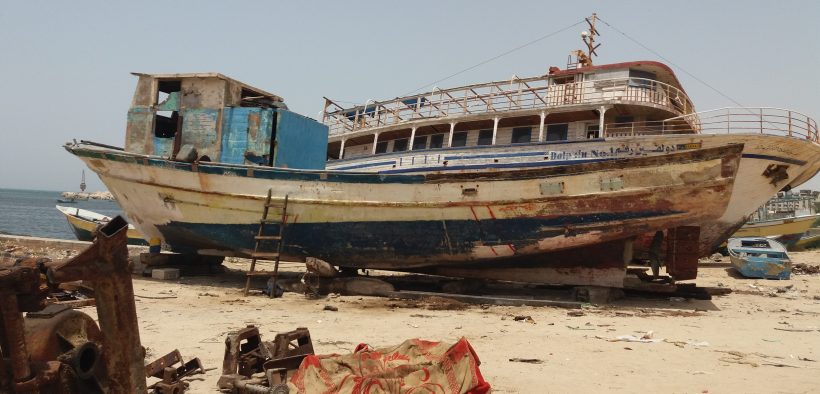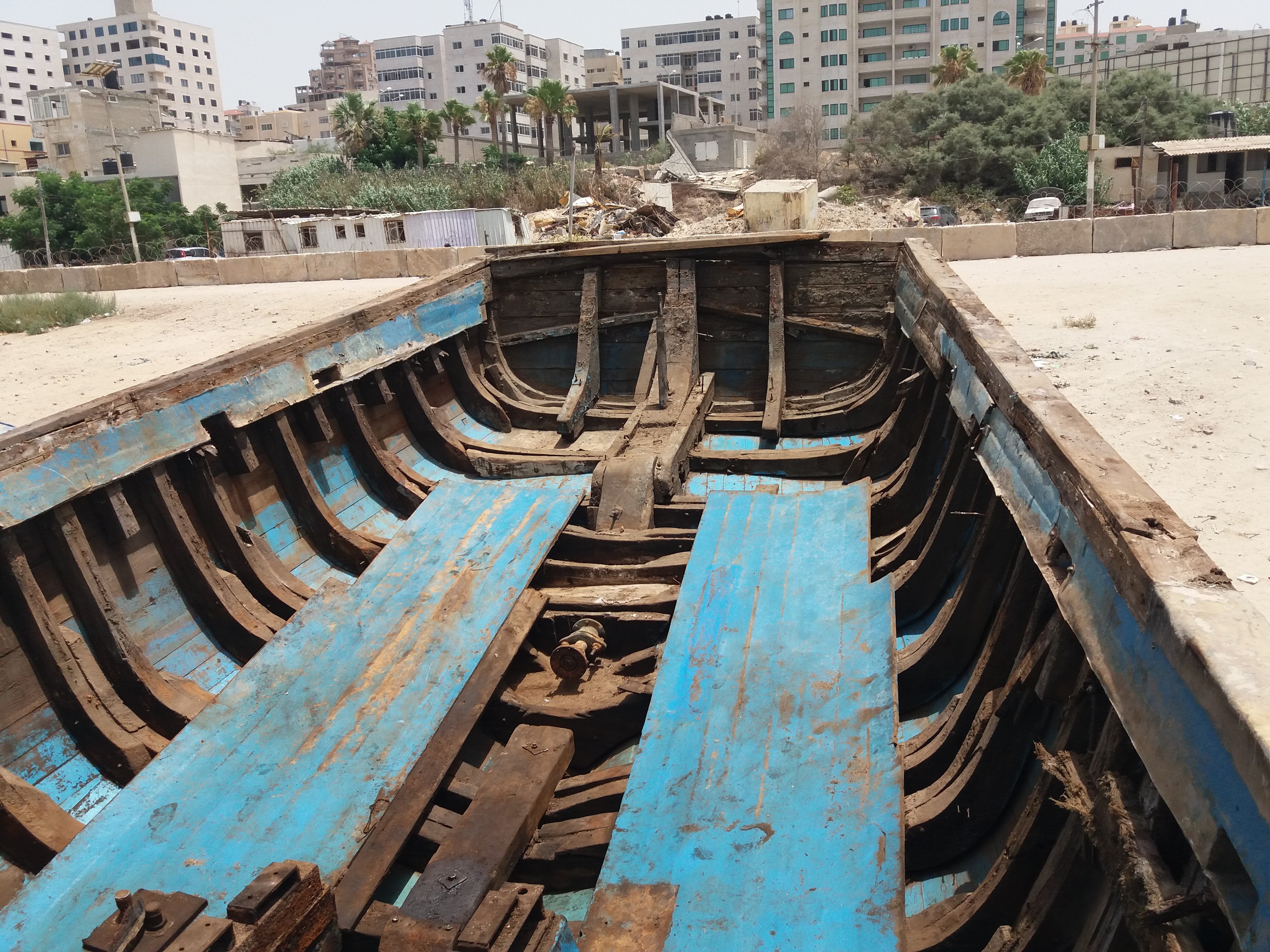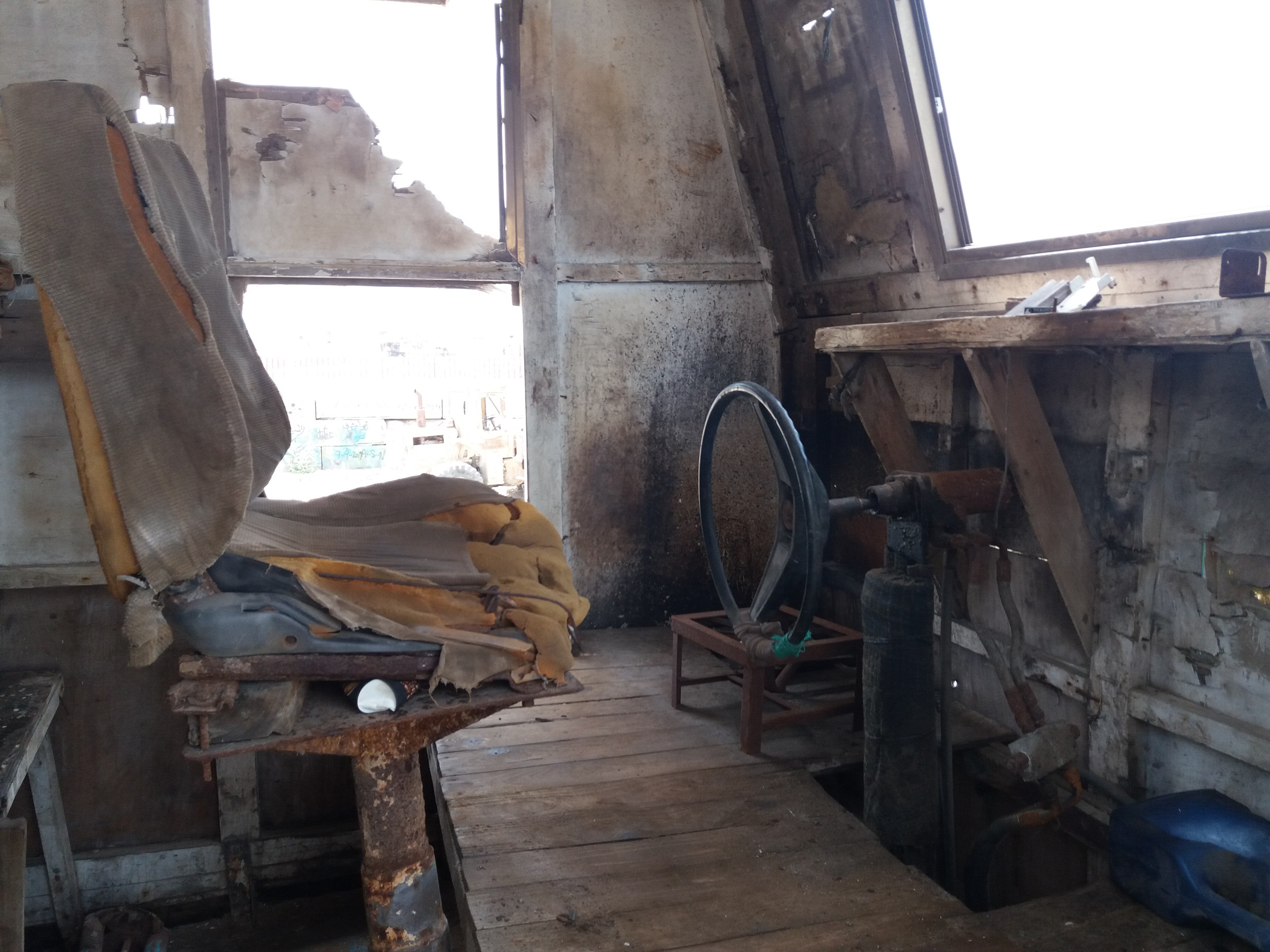Israel Releases First of Gaza’s Long-Seized Fishing Boats

Because of multiple petitions from humanitarian groups, last May Israel’s High Court of Justice ordered the release of fishing boats seized in 2014 for allegedly violating Israeli waters.
Last week, Israeli authorities released dozens of Gaza fishermen’s boats, which were stored at the Israeli port city of Ashdod. The number of boats is estimated at 31 and includes some large fishing boats like that of long-time fisherman, Abdelmo’ty Alhabeel.
Alhabeel’s boat is the largest among the recently released batch of boats. Around 30 others remain in Israel, but Israel is obliged to resume sending them back to Gaza this week.
Sitting along with another fisherman close to a 16-meter-long boat, Mohammad Alhabeel, 29-year-old son and assistant to Abdelmo’ty Alhabeel, spoke of the moment when Israeli naval troops seized the family’s boat and main source of income in 2016.
“By then, I recall that my two brothers and three other fishermen and I were boarding our boat in the afternoon when an Israeli naval vessel approached the boat and started firing rubber-coated steel bullets toward those on-board. I myself was shot right in my neck,” Mohammad Alhabeel told Citizen Truth at the location of the abandoned Gaza seaport, which is used now by local fishermen, west of Gaza City.
Fishing Boat Seizure Aftermath
Mohammad went on to say that during the seizure, Israeli naval soldiers boarded the boat and ordered all of those inside to raise their hands.
“After they ordered us to raise our hands and I was feeling pain into my neck, they towed the boat into Israeli territorial waters until we reached Ashdod. They kept the boat, but they released us after 24 hours, sending us to Gaza via the land Eretz checkpoint in northern Gaza,” he told Citizen Truth.
Mohammad believes the boat was sailing within the Israel-imposed limit for fishing, which at that time was 6 nautical miles.
“When the boat was seized, I was driving the ship within 5 nautical miles off the Middle Area shores, mainly the Nuseirat shore,” Mohammad told Citizen Truth.
Israel Returned Boats with Devastating Damage
The recently released Alhabeel fishing boat is now at the Gaza fishing port. However, it is unusable with a lot of equipment, including motors, gears and even some metal or wood pieces, broken.
“As you see, there is nothing inside, and the rust has ripped through all the ship’s body, and humidity has made all the wood-made body parts erode. As you can see, we had to remove this heap of pieces of wood from the boat. Even the captain’s booth has been battered. Each of the ship’s two motors need repair, worth about $4,000. The whole ship now requires repairs of about $30,000 to $40,000 total.
“This is a great loss that my family has been forced to endure for no reason or fault; we are simply fishermen who earn a living,” Mohammad told Citizen Truth while showing an almost totally battered ship on the beachfront, west of Gaza City.

Fisherman Mohammad Alhabeel shows Citizen Truth ruins of the family’s recently-released ship. (Photo: Rami Almeghari)
Since they lost their boat, Mohammad and his three fishermen brothers have worked with other fishermen in the area for daily wages.
“Over the past three years, my brothers and I have felt that our dignity has been harmed as we have been forced to work for others, after my father Abdelmo’ty used to captain our boat for many years before Israel seized the ship,” Mohammad Alhabeel said.
More Seized Boats Will Be Returned
At the Gaza-based Union of Agricultural Committees in Gaza City, Zakariya Baker, chief for the fishing department with the union, was participating in a meeting to evaluate the latest conditions of the fishing community in the Gaza Strip.
Baker told Citizen Truth that Israeli authorities were to send back one more batch of 11 boats, to Gaza, this past Thursday. He suggested that the total number of seized boats stood at about 65.
“Seizure of Gaza fishermen’s boats happen almost on monthly basis. Almost every month, we record one or two cases of boats seized. This has become the norm since 2013 up to this moment. The majority of those boats are the ones with motors, and unfortunately, the boats are returned with completely broken motors. Each boat needs a repair, worth about $600, while those with motors need more sums of money before they all come back to service,” Baker told Citizen Truth.

Part of the Alhabeel’s recently released ship. (Photo: Rami Almeghari)
Speaking of the effect of the Israel-imposed marine blockade that Israel has enforced since 2006, Baker told Citizen Truth that Gaza’s fishing boats need 300 engines and that the local market lacks such engines.
“In the Gaza Strip, fishermen suffer a lot because of the lack of engines and some other important items needed in fishing, like nets and fiberglass. Over the past several years of Israel’s marine siege, we in the Union of Agricultural Committees have helped repair about 100 engines, with no spare parts available. So, we had to replace spare parts with others among the 100 broken engines, themselves [at increased prices] due to lack of materials.” Baker said at his Gaza City office of the Union of Agricultural Committees.
Wider Fishing Area Not as Wide as Promised

Captain’s booth of the Alhabeel’s recently released ship. (Photo: Rami Almeghari)
More recently, Israel announced that Gaza fishermen will be allowed to sail for 15 nautical miles off the Gaza shore so fishermen can earn a better living. Yet, Baker told Citizen Truth that reality suggests something else.
“Of the distance recently allowed by Israel, many fishermen only go for a distance of 9 nautical miles offshore. In many cases, Israeli naval vessels harass fishermen. Sometimes, fishermen fishing in western Gaza City are exposed to harassment or naval force orders to leave, while those who happen to fish on the same day but in a different area, like the northern area, for example, are left alone and continue working smoothly. Apparently, Israelis put no specific criteria for the harm they inflict on local Gaza fishermen,” Baker said.
Baker called for international intervention, mainly by the United Nations, to prevent more harassment by Israeli naval forces and even help lift a prolonged Israeli marine blockade.
In the Gaza Strip, there are 3,000 to 4,000 fishermen, located in different parts of the coastal region, along the 40 kilometer-long Gaza Strip. Fishing is considered to be a main source of income and nutrition for the 2-million-resident coastal strip.
In 2006 Israel enforced a blockade of the Gaza Strip, following a cross-border attack by Gaza-based resistance groups. The attack led to the capture of an Israeli soldier, Gilad Shalit, who was released in 2012, by means of a prisoner swap deal between the ruling Islamist Hamas in Gaza and Israel through international mediation.
Prior to the imposition of Israel’s land and marine blockade, Gaza fishermen used to reach a distance of 20 nautical miles off the Gaza shores. Since 2006 the allowable distance for fishing has been restricted to 6 nautical miles and sometimes to 3 nautical miles, depending on the flow of events or developments on the ground.
















The gunpoint, appropriative, ethnic-cleansing zionist colony is the biggest crime against humanity in the world. And the world, thanks to the USA, does nothing about it. Nothing.